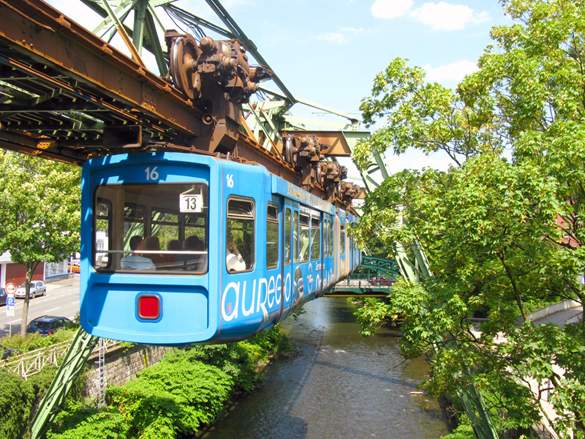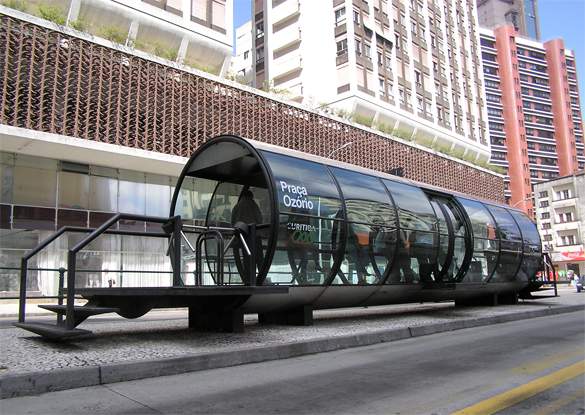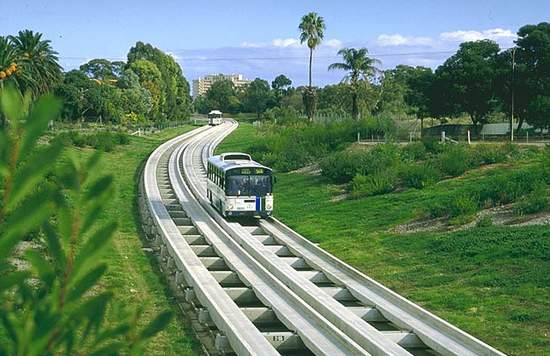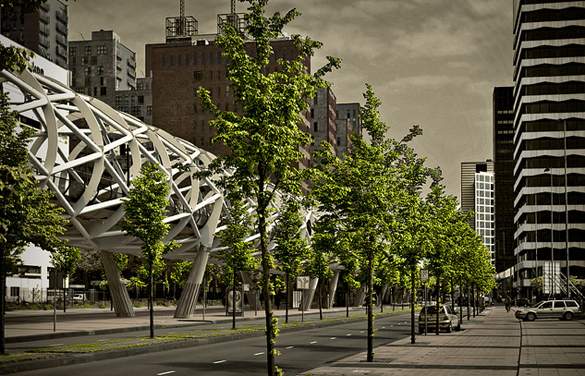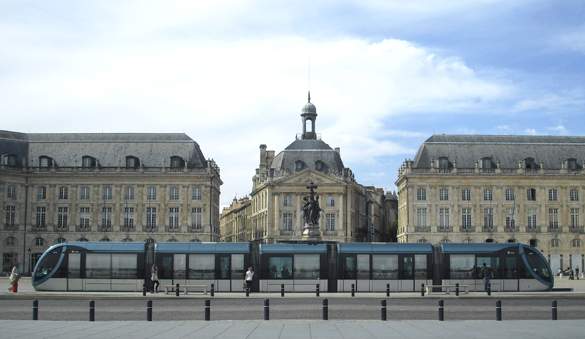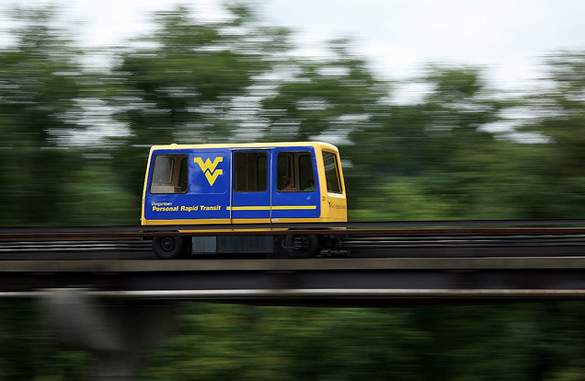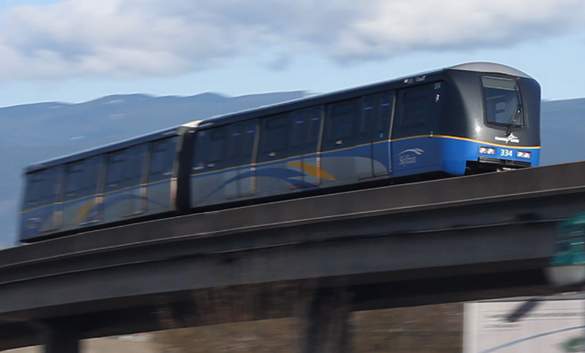I admit it. I’m a transit nerd. A beautiful subway map makes my geeky heart go pitter-pat. I love public transportation because it’s a manifestation of wanderlust in daily life. Subways, trains and buses move people both physically and emotionally.
They also move people across time, guiding our vision of the future. This photo feature highlights quirky transit systems that have helped us usher in the future. Some have withstood the test of time, while others have become outdated caricatures of how we foresaw tomorrow. Either way, they deserve praise for being ahead of their time.
Schwebebahn – Wuppertal, Germany
A suspended monorail was the perfect solution for Wuppertal, a linear city nestled in a valley. Like many things great (and not so great), the prototype for the hanging train was developed in a 19th century German laboratory, and built in 1903. The fact that the train swings from above isn’t a great feat in itself–except that the system has been one of the safest in the world for over a century now. Moving over 25 million passengers annually, Wuppertal’s Schwebebahn remains one of a kind.
Mobile Lounges – Washington Dulles International Airport, Virginia
Adored by cult fans and reviled by others, the Washington Dulles Mobile Lounges are how people in the 1960s imagined the bright future of… 1980. The Moonraker-chic vehicles have accordion legs that elevate and lower the compartments to transport over 100 passengers at a time. As they are being replaced by more ordinary AeroTrains, you only have a few more years to experience this piece of post-war optimism.
Buses & “Tubo” – Curitiba, Brazil
What’s so special about buses, you may ask? With frequent services and dedicated lanes, Curitiba’s Metro Rapid Transit acts more like light rail. It also doesn’t hurt that its stations are sleek, transparent tubes that put many expensive subway stations to shame. I’m particularly excited about the Green Line, Curitiba’s newest venture, which is transforming an old highway into a combined bus, bike and pedestrian zone.
O-Bahn – Adelaide, Australia
Since we’re on the topic of buses that emulate trains, take a look at Adelaide’s O-Bahn. While the vehicles may look like ordinary buses, they run on special paths that guide them like train tracks. Imagine amusement park kiddie cars except this bad boy is for grown-ups. Traveling at 100km per hour, the buses can carry up to 18,000 passengers an hour.
RandstadRail – The Netherlands
Like the country itself, the Netherlands’ RandstadRail’s awesomeness is in its efficiency, frugality and understated beauty. A hybrid of low-floor trams and high-floor metro trains, the compact network connects Holland’s three largest cities, Amsterdam, Rotterdam and the Hague, as well as Utretcht. Seamlessly combining existing train tracks, tram lines and new routes, RandstadRail shows the world you don’t need to build a spankin’ new system to keep up with the changing times. The elevated tracks near Beatrixkwartier in the Hague, adoringly called the netkous (fishnet), makes the most of the limited space, while letting in plenty of sunlight for both passengers and pedestrians.
Metro – Bordeaux, France
Look closely at the picture. Notice anything missing? Bordeaux’s trams are not only shiny, but also magical, seemingly running without fuel. To free its UNESCO World Heritage skyline from the clutters of electric lines, the city of Bordeaux buried power strips for its trams underground–the world’s first. So when you look up, you can see more of Bordeaux’s blue skies.
Personal Rapid Transit – Morgantown, West Virginia
Is it a bird? Is it a plane? No, it’s Personal Rapid Transit! The University of West Virginia in Morgantown has been home to the world’s only operating PRT system since 1975. Up to twenty passengers can share the automated pod, which can either stop at or bypass any of the stations along the route according to demand. Imagine an elevator, except traveling across a city.
SkyTrain – Vancouver, Canada
Kobe’s Port Liner may be the world’s first fully automated transit line, but Vancouver’s SkyTrain perfected the art, becoming the world’s longest at 69km. The 2010 Winter Olympics saw the system effortlessly handle over 620,00 passengers daily–that’s more than the entire population of Seattle.
Singapore MRT, Duisburg H-Bahn, Tokyo Monorail… What’s your favorite futuristic transit? Tell us about it!
Photos by: Robert Schwandl, Metro Washington Airports Authority, Morio, Ryan Smith, Pieter Musterd, C.H. Kwak, N. Mueller, Translink/South Coast British Columbia Transportation Authority
